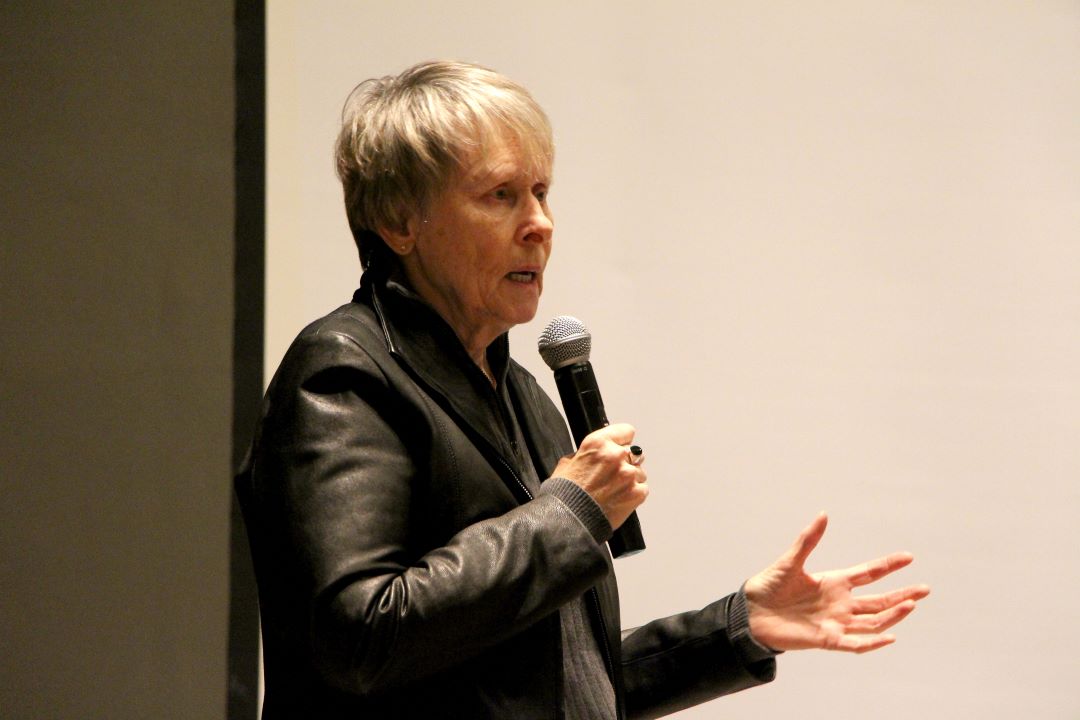
Bondar talks space, neuro-ophthalmology
A neurologist, an astronaut, a photographer: Dr. Roberta Bondar has worn many caps
By Marg SheridanShe may be most well known for being Canada’s first woman in space, but when it comes to the story of Dr. Roberta Bondar, her micro-gravitational adventure is only the tip of the iceberg.
Bondar - who has a BSc from the University of Guelph, an MSc from the University of Western Ontario, a PhD from the University of Toronto, and an MD from McMaster University – has spent the bulk of her career in research medicine focusing on neuro-ophthalmology and the effects of space travel on the human body.
And her interest in neurology may well have been influenced by one her favourite pursuits: photography.
“I’ve always felt that in neurology, the eyes are the windows to the soul,” Bondar said. “In those days we didn’t have CT scanners or MRI’s, so you could really pinpoint where a lesion was in a brain by knowing about eyes and eye movements, so it was something that was a passion of mine and still is.”
Bondar, who was also the first neurologist in space, spent the majority of her eight-days on the shuttle Discovery conducting research and experiments aimed at helping future astronauts spend extended periods in space. And it was a busy period for the researchers on the Spacelab, because without gravity the experiments took two-to-three times as long to perform, and she took particular interest in some of her research subjects.
“I was fascinated by some of the physical experiments, because in space we can grow crystals that are really large (since) gravity doesn’t deform their shape, they’ll keep growing,” she explained when asked if one of the experiments particularly piqued her interest. “These crystals are important in the semiconductor industry, and some are important actually for looking and detecting breast cancer - when we look at various types of heat that come off of various types of tumors.”
Shortly after her Discovery mission, Bondar left the Canadian Space Agency and spent the next decade as the head of the international research team at NASA tasked with looking at how blood flow in the brain changes during space flight. Bed-rest studies, which mimic the effects of different gravity levels on the human body, that her team developed to create programs to examine astronauts, have since been used by the wider medical community to look into a variety of diseases and disorders.
“Those same programs are being used at Harvard, for example, to look at individuals with some of the same symptoms that we see in returning astronauts that we find in certain neurodegenerative diseases such as Parkinson’s disease or spinal cord injury where we look at orthostatic hypotension,” Bondar continued. “So some of those basic pathways - the kinds of algorithms we developed for the computer to analyze these things - are now available for use on patients.”
Throughout her medical career, and subsequent career as an astronaut, Bondar has continued to be an avid photographer and has had both exhibitions of her work, and published several books of her photography. She now mainly focuses on her foundation, which highlights the need to improve environmental education and knowledge, and hosts the ‘Bondar Challenge’ which is a competition for students to use photography in a meaningful way to facilitate learning about the environment.
But while she may no longer be working with NASA as a medical researcher, Bondar, who was inducted into the Canadian Medical Hall of Fame in 1998, is still happy to imagine where she’d like their research to take humanity:
“I’d like medical research in space to go to the moon actually – I’d like it to get off the space station and go to a stable platform at a place where we can learn more for developing activities for deep space exploration, and even to Mars.”
Dr. Roberta Bondar visited the University of Saskatchewan on February 4 at the invitation of the College of Arts and Science to give a lecture titled "Earth Patterns from Afar: A Challenging Perspective."
